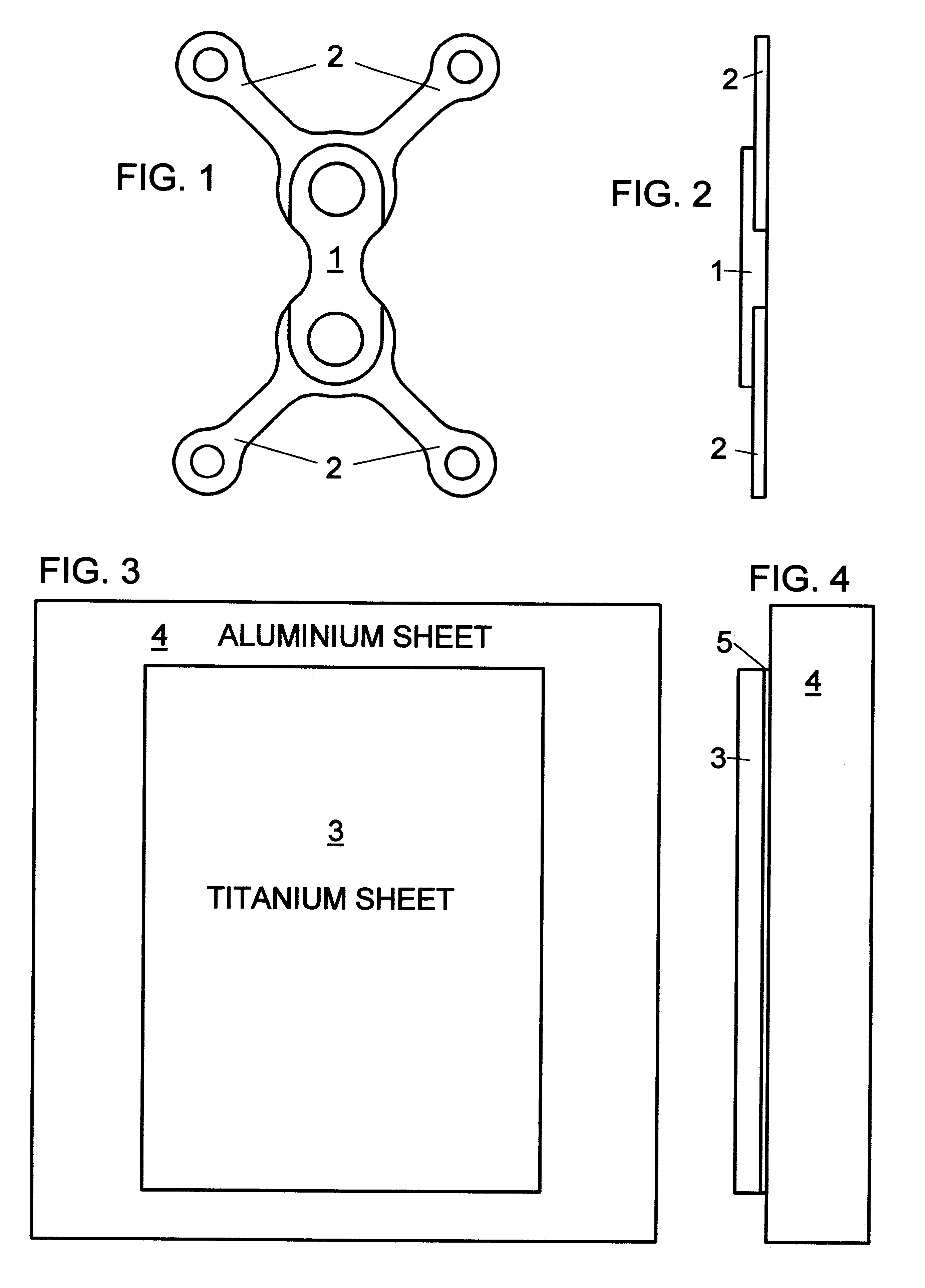Production process of varying thickness osteosynthesis plates
a technology of osteosynthesis and production process, which is applied in the direction of layered products, paper/cardboard articles, lamination, etc., can solve the problems of difficult plate manufacturing, inability to meet biocompatible materials, and difficult plate adjustment to the bone surface by bending, etc., to achieve easy and economical way, high thermal conductivity, and better fitting to the bone surface
- Summary
- Abstract
- Description
- Claims
- Application Information
AI Technical Summary
Benefits of technology
Problems solved by technology
Method used
Image
Examples
Embodiment Construction
The best mode of carrying out the invented process is described considering the manufacturing of the osteosynthesis plate with reference to the accompanying drawings. The plate material is commercially pure titanium. The shape of the plate, indicated in FIG. 1, is an example of an osteosynthesis plate with a double Y configuration characterised by different thickness in the proximal area 1 and in the distal areas 2. Thickness in the proximal area is 1.00 mm, thickness in the distal areas is 0.50 mm. The production process requires to manufacture the composite structure (FIGS. 3, 4) consisting of a commercially pure titanium sheet (3) with a thickness of 1.05 mm, bound by a cyanoacrylate layer (5) to an aluminium sheet (4). The aluminium sheet is larger than the titanium plate, and its thickness is 4 mm. The composite structure is clamped to the worktable of a milling machine which performs the drilling operations, the surfaces generation according to the required thickness, the cont...
PUM
| Property | Measurement | Unit |
|---|---|---|
| Angle | aaaaa | aaaaa |
| Temperature | aaaaa | aaaaa |
| Thickness | aaaaa | aaaaa |
Abstract
Description
Claims
Application Information
 Login to View More
Login to View More - R&D
- Intellectual Property
- Life Sciences
- Materials
- Tech Scout
- Unparalleled Data Quality
- Higher Quality Content
- 60% Fewer Hallucinations
Browse by: Latest US Patents, China's latest patents, Technical Efficacy Thesaurus, Application Domain, Technology Topic, Popular Technical Reports.
© 2025 PatSnap. All rights reserved.Legal|Privacy policy|Modern Slavery Act Transparency Statement|Sitemap|About US| Contact US: help@patsnap.com


